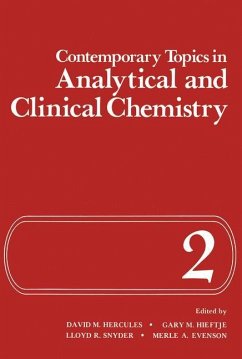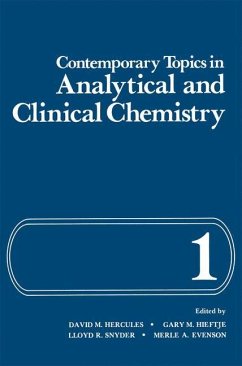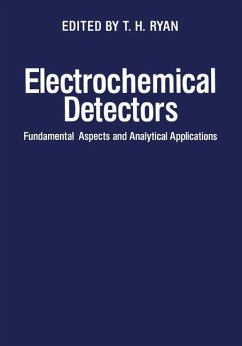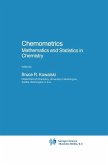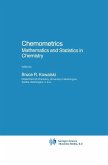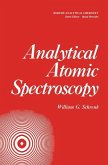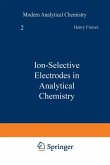1. Wavelength Modulation Spectroscopy.- 1. Introduction.- 2. Historical Background.- 3. Theoretical Aspects.- 3.1. The Small Modulation Case: Derivative Spectroscopy.- 3.2. The Large Modulation Case.- 4. Experimental Techniques.- 4.1. Wavelength Modulation.- 4.2. Derivative Techniques Not Involving Wavelength Modulation.- 5. Applications.- 5.1. Atomic Spectroscopy.- 5.2. Molecular Spectroscopy.- 6. References.- 2. Apparatus and Methods for Laser Doppler Electrophoresis.- 1. Introduction.- 1.1. Description of Technique.- 1.2. Applications.- 2. Principles.- 2.1. Electrophoresis.- 2.2. light-Scattering Velocimetry.- 2.3. Signal Analysis.- 2.4. Implications of Theory for Experimental Design.- 2.5. Electric Field and Power Dissipation.- 3. Apparatus.- 3.1. Laser.- 3.2. Optics.- 3.3. Chamber.- 3.4. Power Supply and Switching.- 3.5. Detection Optics.- 3.6. Signal Analysis and Data Collection.- 4. Methods.- 4.1. Chamber Preparation.- 4.2. Sample Preparation.- 4.3. The Measurement.- 4.4. Common Experimental Problems.- 5. Examples of Electrophoretic Light-Scattering Spectra.- 5.1. Blood Plasma.- 5.2. Blood Cells.- 6. References.- 3. Detectors for Trace Organic Analysis by liquid Chromatography: Principles and Applications.- 1. General Considerations.- 1.1. Introduction.- 1.2. Trace Analysis.- 1.3. Instrumental Causes of Peak Distortion.- 2. Optical Detectors.- 2.1. Infrared Detectors.- 2.2. UV-Vis Absorbance.- 2.3. Fluorescence Detection in Liquid Chromatography (LC/F).- 3. Electrochemical Detectors.- 3.1. Introduction.- 3.2. Applicability of Finite-Current Electrochemical Detectors.- 3.3. Principles of Amperometric and Coulometric Detection.- 3.4. Applications of Amperometric and Coulometric Detectors.- 4. Vapor-Phase Detection Schemes.- 4.1. Introduction.- 4.2. Detector Designs: Principles and Applications.- 5. Miscellaneous Detectors.- 5.1. Bulk-Solution Property Detectors.- 5.2. Microadsorption Detector.- 5.3. Radioactivity Detector.- 6. Appendix 1.- 7. Appendix 2.- 8. References.- 4. The Radioimmunoassay of Enzymes.- 1. Introduction.- 2. Categories of Analytical Techniques.- 3. Requirements for an Enzyme Radioimmunoassay.- 3.1. Antigen.- 3.2. Antiserum.- 3.3. Labeled Antigen.- 3.4. Separation Procedure.- 4. Differences in the Use of Enzyme Assays in Biochemistry and Clinical Chemistry.- 5. Advantages of Enzyme Measurement by Concentration Rather Than by Catalytic Activity.- 5.1. Sensitivity.- 5.2. Specificity.- 5.3. Practicality.- 6. Examples of the Advantages of Enzyme Measurement by Concentration.- 6.1. Serum Levels of Proteolytic Enzymes.- 6.2. Enzyme Determinations for the Diagnosis of Myocardial Infarction.- 7. Conclusions.- 8. References.- 5. Clinical Liquid Chromatography.- 1. Introduction.- 1.1. Present Importance of Clinical LC.- 1.2. Comparison and Competition of LC with Alternate Techniques.- 1.3. Advantages and Limitations of LC.- 2. General Considerations.- 2.1. Columns.- 2.2. Phase systems.- 2.3. Adsorbents.- 2.4. Bonded Reverse-Phase Packings.- 2.5. Polar Bonded Phases.- 2.6. Ion-Exchange Packings.- 2.7. liquid-Liquid Chromatography.- 2.8. How Column N Values are Varied for a Given Application.- 2.9. Maximum Attainable N Values in LC.- 2.10. Column Handling and Lifetime.- 2.11. Equipment.- 2.12. Procedures and Techniques.- 3. Applications.- 3.1. Biogenic Amines.- 3.2. Drugs.- 3.3. Hemoglobin AIc.- 3.4. Hormones.- 3.5. Isoenzymes.- 3.6. Lipids.- 3.7. Porphyrins.- 3.8. Vitamins.- 3.9. Organic Acids.- 3.10. Ubiquinone.- 3.11. Nucleosides, Nucleotides, and Bases.- 4. Note Added in Proof.- 5. References.
Hinweis: Dieser Artikel kann nur an eine deutsche Lieferadresse ausgeliefert werden.
Hinweis: Dieser Artikel kann nur an eine deutsche Lieferadresse ausgeliefert werden.

